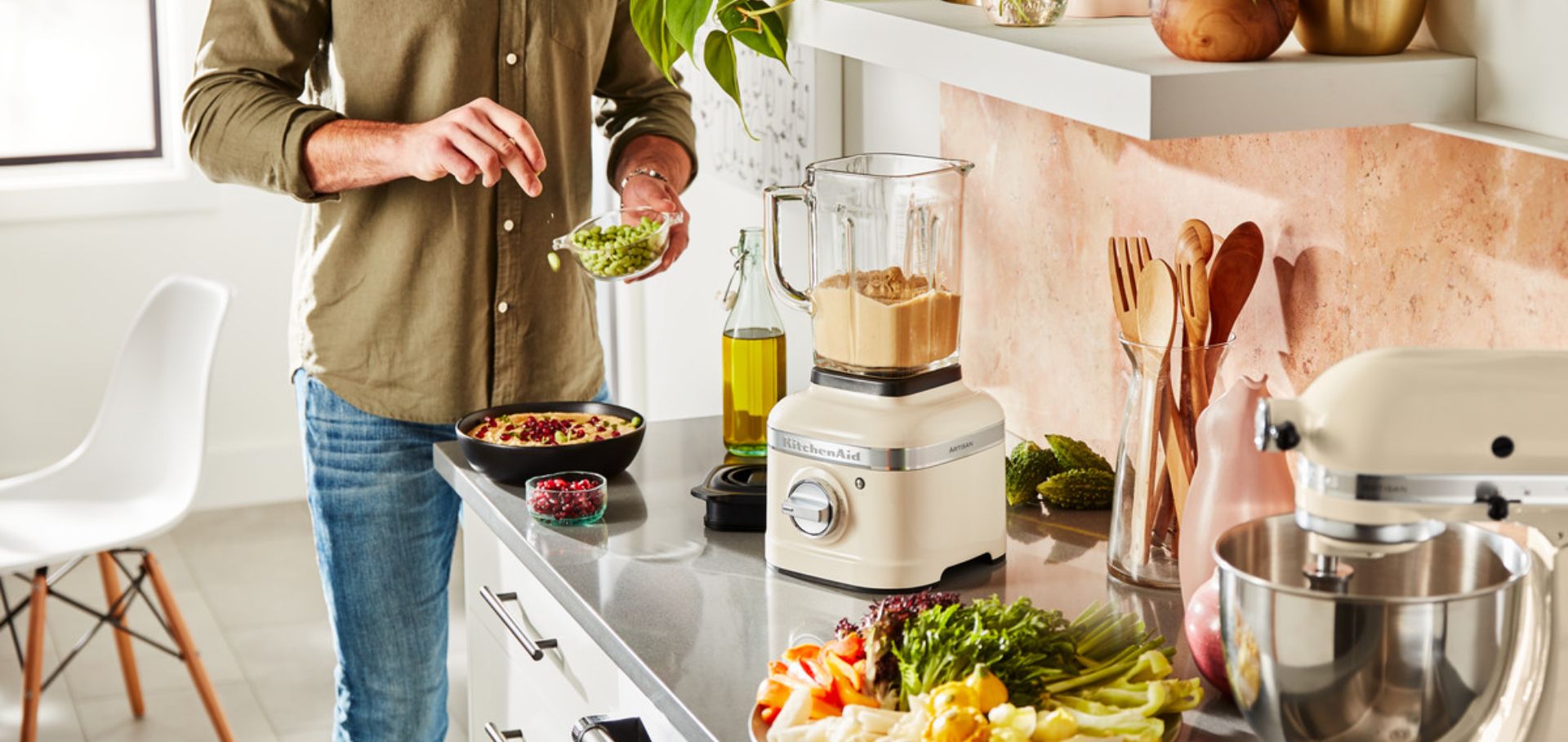Blenders to unlock your potential
Free standard delivery on orders above £ 75
14 days free return
100% secure payment
Blenders (6)
Blenders (6)
Blender K130 - Classic
The K130 classic range blender is a kitchen essential for effortless smoothies, cocktails, soups, sauces and more.
BLENDER K400 - ARTISAN
Enjoy the perfect taste with the K400 blender by transforming the toughest ingredients into smooth textures and delicious flavours.
CORDLESS PORTABLE BLENDER WITH BATTERY - KITCHENAID GO
Cordless portable blender with battery. Blend healthy smoothies on the go.
CORDLESS PORTABLE BLENDER WITHOUT BATTERY - KITCHENAID GO
Cordless portable blender without battery. Make healthy smoothies on the go.
Buy 2 get -20%, Buy 3 or more and get -30% on the entire website
BLENDER K150
Ultimate ice-crushing blender. Effortlessly create your best tasting smoothie with the K150.
Blender High Performance - ARTISAN
Blender High Performance - Artisan powers through tough and thick ingredients.
Food blender is a whiz in the kitchen
Breaking down ingredients in a flash, a blender is a heroic tool. Feel like a champion as you rustle up nutritious smoothies, easy gazpacho, and home-made hummus and salsas! It's like having a soup maker, a smoothie maker... you name it. There's no time to waste — let's get blending.
Smooth even the toughest ingredients
Whether you're looking for a smoothie blender, or a kitchen blender to work with you on your next recipe, it's best to choose one that's ready for anything. The KitchenAid blending system uses a unique asymmetric blade to blend at four angles, together with a ribbed jar design that folds contents back towards the blade. The powerful vortex breaks down ingredients, from ice to kale and coconut, so you can enjoy smooth results and the perfect taste.
Food blender to eat a rainbow
A powerful blender is a great way to pack taste and nutrition into your diet. You can make your own nut milks, batters, purées, baby food, dips and more. By breaking down the ingredients, a blender keeps all the goodness and fibre while releasing the natural flavour. You'll be surprised how easy it is to get your 'five a day'... and enjoy new taste sensations.
What can you make in a blender?
Blend your way around the clock. From fluffy pancakes for breakfast to a mint & pea dip to enjoy with pitta for lunch. Knock up a thick cauliflower soup for dinner and a decadent chocolate mousse for dessert. Salsas, sauces, smoothies, milk shakes, nut butters and even ice cream are ideal candidates for a blending session.
Perfect blend for your style
Match any aesthetic with a choice of colours, clean lines and a chic design. Your food blender will look fabulous on your countertop and can even complement other appliances, like your stand mixer, toaster or kettle. KitchenAid blenders are built to be robust and durable too, combining strength with beauty.
Easy to clean in seconds
Squeeze a drop of dishwasher soap and add warm water to the blender. Use a pre-programmed function or just run it for several seconds to have a clean jar after every usage. It's a fun and satisfying way to clear out the jar. To keep the outside looking sparkling, simply wipe over with a clean, damp cloth and then dry.
Accessories for K400, K150, and K130 blender models only





















